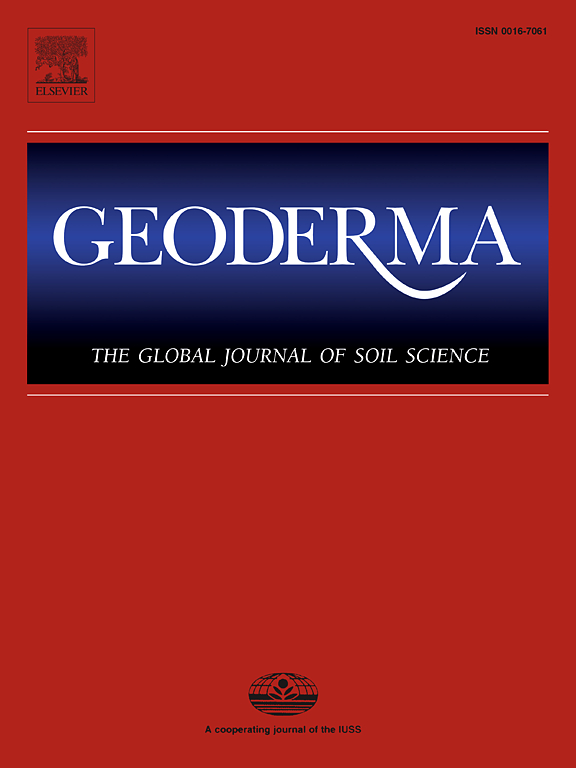Gross soil N transformations and microbial communities in Luxembourg beech forest (Fagus sylvatica L.) soils along a pH gradient
IF 5.6
1区 农林科学
Q1 SOIL SCIENCE
引用次数: 0
Abstract
Acidic and calcareous soils differ in nitrogen (N) cycling, yet the underlying gross N transformations remain unclear in temperate forests. To address this gap, we quantified gross N transformations and microbial abundances in the organic layer and mineral topsoil (0–5 cm) of four closely situated beech forests along a natural pH gradient. Gross N turnover accelerated from acidic to calcareous soils, with gross mineralization rates increasing 6-fold in the organic layer and 10-fold in the mineral topsoil. However, net N release did not increase accordingly due to concurrent increases in gross immobilization. Enhanced immobilization at higher pH reflected greater microbial N demand under bacterial dominance, evidenced by higher microbial N, lower microbial C:N ratios and reduced fungi-to-bacteria (F:B) ratios. Autotrophic nitrification also increased with pH, corresponding to elevated ammonium supply from gross mineralization and higher abundances of ammonia-oxidizers. Heterotrophic nitrification was much lower than autotrophic nitrification in calcareous soils but equally important in acidic soils. Net N release was restricted to the mineral topsoil, shifting from low ammonium and nitrate release in acidic soils, to substantial nitrate release in calcareous soils, potentially supporting greater plant species richness at high pH. Our results demonstrate that soil N supply mechanisms differ markedly along the pH gradient, from low immobilization at low pH to high nitrification at high pH, driven by shifts in fungal versus bacterial dominance and their distinct N demands. This improved understanding of microbial regulation of acidity-related soil N fertility is crucial for predicting forest responses to global climate disturbances.
求助全文
约1分钟内获得全文
求助全文
来源期刊

Geoderma
农林科学-土壤科学
CiteScore
11.80
自引率
6.60%
发文量
597
审稿时长
58 days
期刊介绍:
Geoderma - the global journal of soil science - welcomes authors, readers and soil research from all parts of the world, encourages worldwide soil studies, and embraces all aspects of soil science and its associated pedagogy. The journal particularly welcomes interdisciplinary work focusing on dynamic soil processes and functions across space and time.
 求助内容:
求助内容: 应助结果提醒方式:
应助结果提醒方式:


